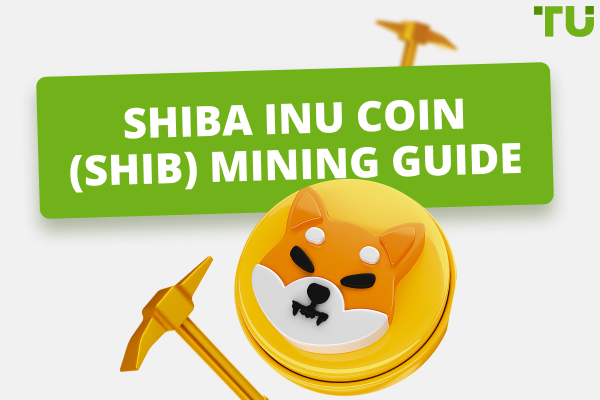How To Trade Cryptocurrency With A Bot
Here are 3 steps to start crypto bot trading:
- 1
Choose a cryptocurrency trading bot: consider a strategy, research bots, read reviews.
- 2
Set up a bot: connect to exchange, fund account, configure parameters.
- 3
Monitor results and manage bot.
Trading bots are becoming increasingly popular among crypto traders looking for a more efficient and automated way to make profits in the crypto market.
In this beginner’s guide, we’ll explore the basics of setting up and managing a cryptocurrency trading bot. We’ll discuss the advantages and potential risks of using a trading bot and provide guidance on how to get started.
ByBit is high liquidity exchange for trading with botsWhat are cryptocurrency trading bots
At their core, cryptocurrency trading bots are sophisticated software programs designed to interact directly with financial exchanges. They meticulously monitor market data and execute trades based on predefined algorithms.
The advantages of utilizing such bots are compelling. They allow for relentless trading, and aren’t bound by human limitations such as sleep or emotions. Bots can also process vast volumes of data, discerning patterns that are almost imperceptible to the human eye.
Of course, there's a flip side. They require meticulous configuration and aren’t immune to the complexities of market anomalies. Moreover, their algorithmic nature means they may not always cope with the unpredictable nature of the crypto markets, sometimes resulting in less-than-optimal trading decisions without human oversight.
How to choose a cryptocurrency trading bot
Choosing the right cryptocurrency trading bot is a nuanced process, one that should be approached with a blend of strategic thinking and diligent research.
Consider your trading strategy: Your trading strategy is the cornerstone of your interaction with a trading bot. It is essential to identify a bot that aligns with your investment goals, risk tolerance, and the intricacies of your trading plan. Whether you favor long-term holding or day trading, your chosen bot should complement your strategy, not complicate it.
Research different bots: Different bots specialize in various aspects of trading such as arbitrage, market-making, or portfolio management. Analyze their functionality, interface, supported exchanges, and security features. Look beyond the surface and evaluate the underlying technology. Some bots may offer open-source code for customization, while others might operate on a proprietary, closed-source basis. Learn about the possibilities of usingAI crypto trading bots.
Read reviews: One of the most critical steps is to read reviews and testimonials from other users. Their experiences can provide insight into a bot's performance and reliability. Look for feedback on ease of use, success rates, customer support, and any red flags that might surface. A community's endorsement or critique can often paint a realistic picture of what to expect.
To get a good starting point for finding a crypto trading bot, use a review: 11 Best Crypto Trading Bots for 2023 - Free and Paid.
How to set up a cryptocurrency trading bot
The setup process of a cryptocurrency trading bot is a critical phase where precision and attention to detail are paramount. This section guides you through the essential steps to bring your trading bot online.
- 1
Connect your bot to a cryptocurrency exchange: This is typically done through an API (Application Programming Interface), which allows the bot to securely interact with your exchange account. Each exchange will have its own set of instructions for API generation and permissions. It’s crucial to only grant the necessary permissions that your bot needs to operate. Usually, this includes reading data, executing trades, and managing funds, but not the permission for withdrawals.To learn more about the best free bots for Binance, one of the world’s leading cryptocurrency exchanges, you can read our article on Best Free Crypto Trading Bots For Binance 2025.
- 2
Fund your account: Before your bot can commence trading, your exchange account needs to be funded. This means depositing cryptocurrency or fiat currency into your exchange wallet. Ensure you transfer enough funds to meet the minimum trade requirements of the exchange and your trading strategy, but also consider risk management—don’t deposit more than you’re willing to risk.
- 3
Configure your bot's settings: Configuring your bot's settings is where your trading strategy comes to fruition. You'll set parameters that dictate the bot’s trading behavior: which cryptocurrencies to trade, the size of orders, specific strategies like top loss and take profit limits, and more.
Configuring your bot can be as simple as selecting pre-set strategies or as complex as custom-coding your parameters if the bot allows for it. Regularly updating and fine-tuning these settings is essential to keep your bot aligned with the market and your evolving trading strategy.
Best crypto exchanges
How to manage your cryptocurrency trading bot
Effective management of a cryptocurrency trading bot is an ongoing process.
Monitoring is a continuous and crucial task. It's not enough to set up a bot and forget it. You must keep a vigilant eye on its operations. This involves tracking trade history, analyzing win/loss ratios, and understanding how the bot is interacting with market movements.
Many bots come with a dashboard that provides real-time statistics about the bot’s activity. Use these tools to your advantage, ensuring that the bot's performance aligns with your expectations and investment goals.
Additionally, it’s essential to adjust your bot's settings in response to market changes or shifts in your trading strategy. This could include tweaking trade sizes, stop losses, and take profit orders. It may also involve altering the technical indicators and algorithms that guide the bot’s decision-making process.
Remember, the bot is a tool under your control, and its flexibility is one of its greatest assets.
Conclusion
Cryptocurrency trading bots have become an increasingly popular tool for traders to automate the buying and selling of cryptocurrencies.
By taking the time to understand the fundamentals of setting up a trading bot, traders can ensure that they are taking advantage of this powerful tool in the most profitable way.
With careful management, traders can leverage the power of trading bots to maximize their returns.
FAQs
Does trading bots work in crypto?
Yes, trading bots do work in crypto, automating trades based on predefined criteria and reacting to market conditions faster than manual trading.
Are Cryptocurrency bots legal?
Cryptocurrency bots are legal in most jurisdictions, provided they are used in compliance with the exchange’s terms of service and local regulations.
Does Binance allow bots?
Yes, Binance does allow the use of trading bots and provides API support for automated trading on its platform.
Are crypto bots risky?
Crypto bots carry risks similar to manual trading, such as potential for losses due to market volatility or if not configured correctly. However, they can also help mitigate risks associated with human error and emotional trading.
Glossary for novice traders
-
1
Volatility
Volatility refers to the degree of variation or fluctuation in the price or value of a financial asset, such as stocks, bonds, or cryptocurrencies, over a period of time. Higher volatility indicates that an asset's price is experiencing more significant and rapid price swings, while lower volatility suggests relatively stable and gradual price movements.
-
2
Take-Profit
Take-Profit order is a type of trading order that instructs a broker to close a position once the market reaches a specified profit level.
-
3
Ethereum
Ethereum is a decentralized blockchain platform and cryptocurrency that was proposed by Vitalik Buterin in late 2013 and development began in early 2014. It was designed as a versatile platform for creating decentralized applications (DApps) and smart contracts.
-
4
Cryptocurrency
Cryptocurrency is a type of digital or virtual currency that relies on cryptography for security. Unlike traditional currencies issued by governments (fiat currencies), cryptocurrencies operate on decentralized networks, typically based on blockchain technology.
-
5
Bitcoin
Bitcoin is a decentralized digital cryptocurrency that was created in 2009 by an anonymous individual or group using the pseudonym Satoshi Nakamoto. It operates on a technology called blockchain, which is a distributed ledger that records all transactions across a network of computers.
Team that worked on the article
Vuk stands at the forefront of financial journalism, blending over six years of crypto investing experience with profound insights gained from navigating two bull/bear cycles. A dedicated content writer, Vuk has contributed to a myriad of publications and projects. His journey from an English language graduate to a sought-after voice in finance reflects his passion for demystifying complex financial concepts, making him a helpful guide for both newcomers and seasoned investors.
Dr. BJ Johnson is a PhD in English Language and an editor with over 15 years of experience. He earned his degree in English Language in the U.S and the UK. In 2020, Dr. Johnson joined the Traders Union team. Since then, he has created over 100 exclusive articles and edited over 300 articles of other authors.
Mirjan Hipolito is a journalist and news editor at Traders Union. She is an expert crypto writer with five years of experience in the financial markets. Her specialties are daily market news, price predictions, and Initial Coin Offerings (ICO).













